Panama Trip
November 16-28, 2007
![]()
Day 1, Friday November 16, 2007
Day 2, Saturday, November 17, 2007
Day 3, Sunday, November 18, 2007
Day 4, Monday, November 19, 2007
Day 5, Tuesday, November 20, 2007
Day 6, Wednesday, November 21, 2007
Day 7, Thursday, November 22, 2007
Day 8, Friday, November 23, 2007
Day 9, Saturday, November 24, 2007
Day 10, Sunday, November 25, 2007
Day 11, Monday, November 26, 2007
Day 12, Tuesday, November 27, 2007
Day 13, Wednesday, November 28, 2007
![]()
Day 7, Thursday, November 22, 2007 (Thanksgiving)
This morning we started early as our plan was to spend all day on the Pipeline
Road. As I was getting ready to go early in the morning, for some reason I
decided to take a photo of the equipment I was carrying around on the trails.
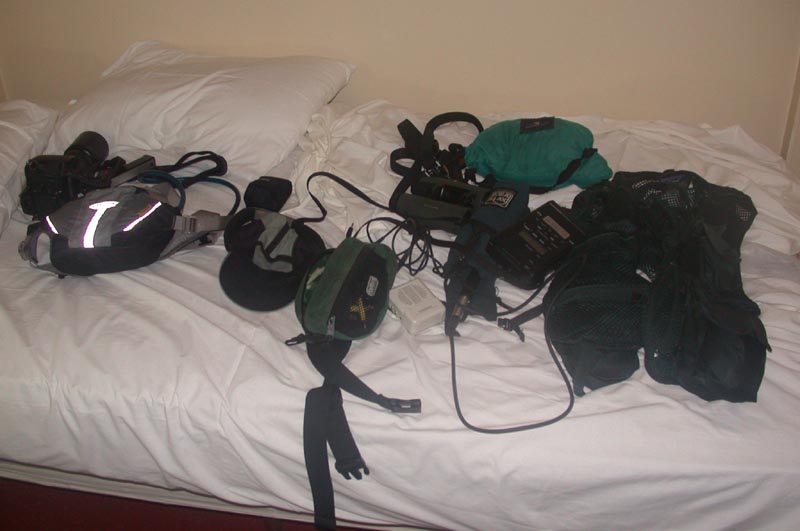
In the photo above you can see my Nikon D70s digital SLR camera with 400mm lens used mainly for birds, a fanny pack hydration system with 2-liter water bladder, compact flash unit, hat, fanny pack for my Nikon Coolpix 995 digital camera (with which this photo was taken), bright green raincoat, Swarovski binoculars, Sennheiser ME-66 shotgun microphone, Marantz PMD 660 digital recorder, supplemental speaker/amplifier and cord, and lightweight vest with additional lenses, wipe rags, plastic covers, spare memory cards, and spare batteries. On some days, I also carried my scope and tripod, but not today!
Some of us had a quick chance to enjoy another fine tropical sunrise from the observation deck before our departure.
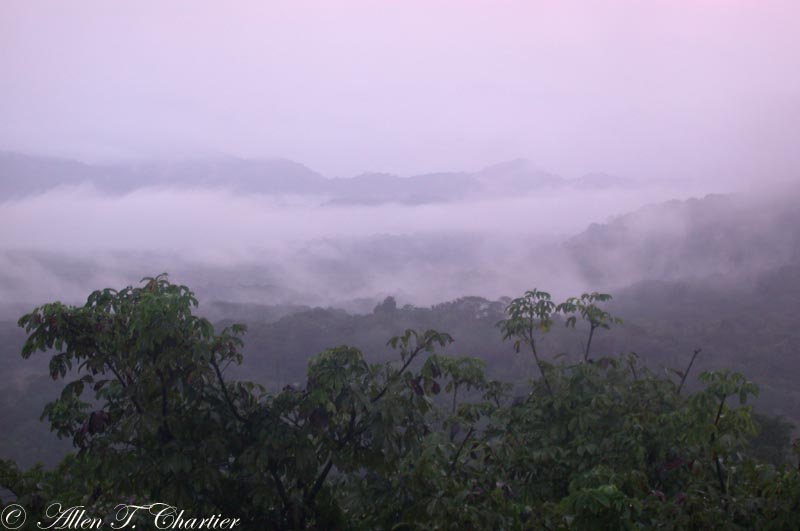
And Cheri took down the small feeder she and Jeff had been hanging outside their room, as we hoped that leaving it along side the Pipeline Road at a place we'd be returning to would possibly attract some hummingbirds out there, as it had been doing very successfully at the Canopy Tower.

At the entrance to the Pipeline Road, we saw this Keel-billed Toucan calling loudly in a bare tree right next to a cringing (?) Turkey Vulture.
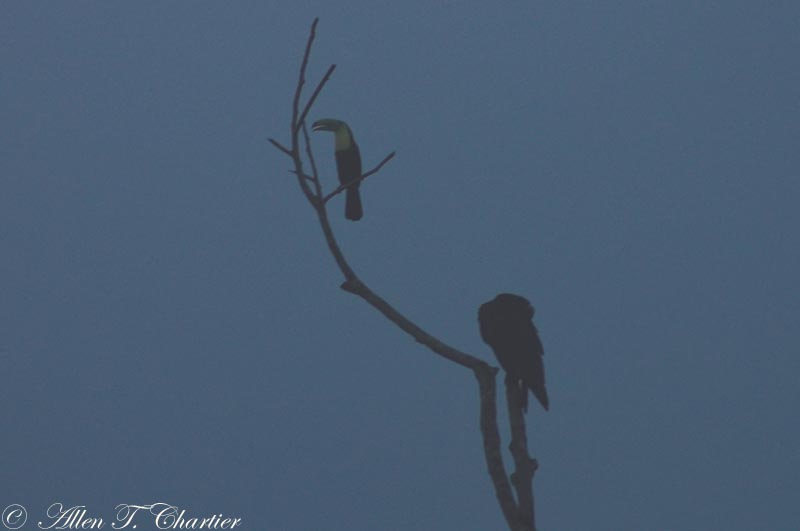
Today, we drove in to the 2-kilometer point where we had stopped walking on our previous trip here. We had a couple interesting bird sightings while riding in the back of the Rainfomobile. This male White-tailed Trogon was very cooperative.

And we had excellent views of the first, and only Great Jacamar of the trip as he perched in plain view above us, then sallied out and grabbed a large horsefly in mid-air (or was it a tiny flycatcher!).
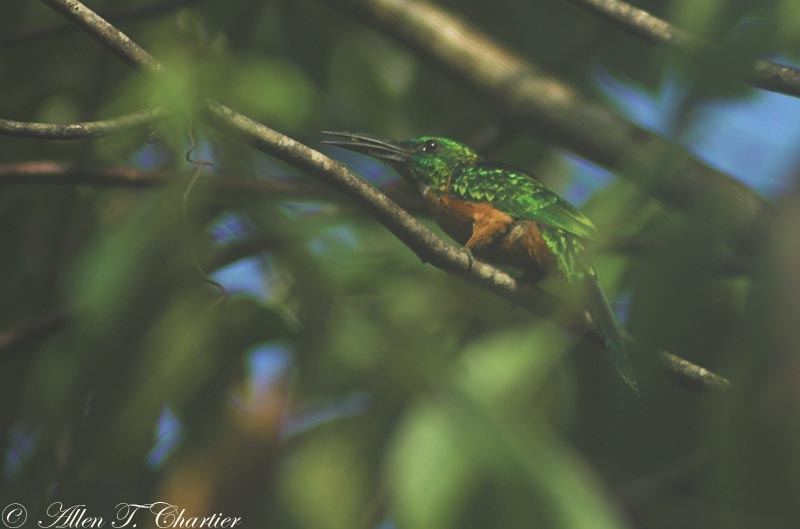
Once we got to the bridge at 2 kilometers, we started walking. Today we'd be spending more time in primary forest, with the possibility for a few different birds. With all the rain, I'd been expecting to see quite a few mushrooms and other fungi. But that wasn't the case, with the shelf fungus we found here one of few exceptions.
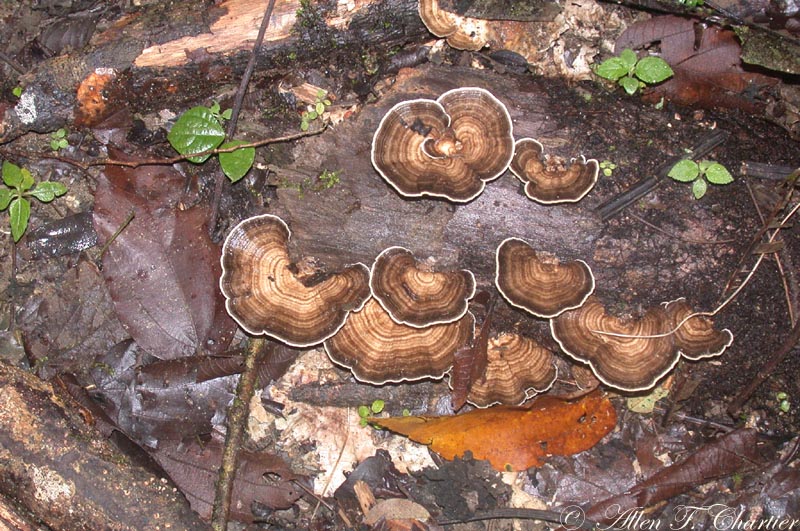
The birding was good, and we had no rain all morning. Several large Purple-throated Fruitcrows were seen well.
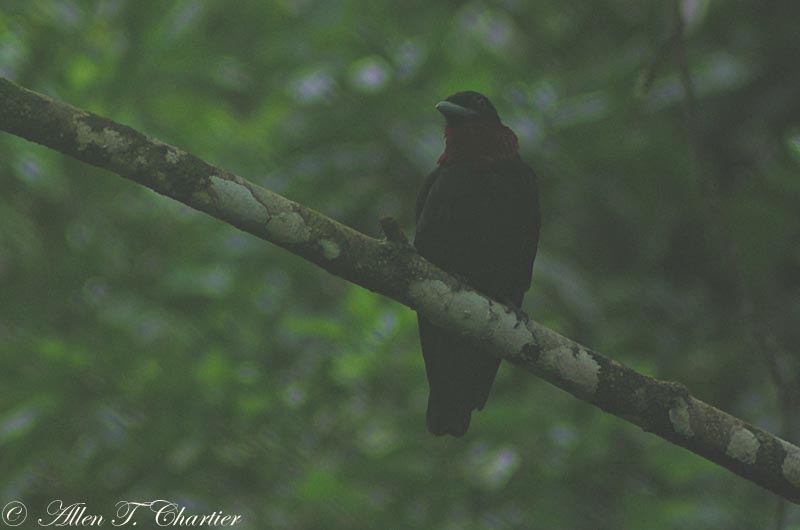
And our luck with small flycatchers continued, as I got decent photos of one of the tiny Ruddy-tailed Flycatchers we saw this morning. Normally an uncommon species that doesn't often sit still in the open, it was surprising to see them so easily here. At about 3 1/2 inches in length, it isn't as small as some of the others we'd seen, but still a very small bird.
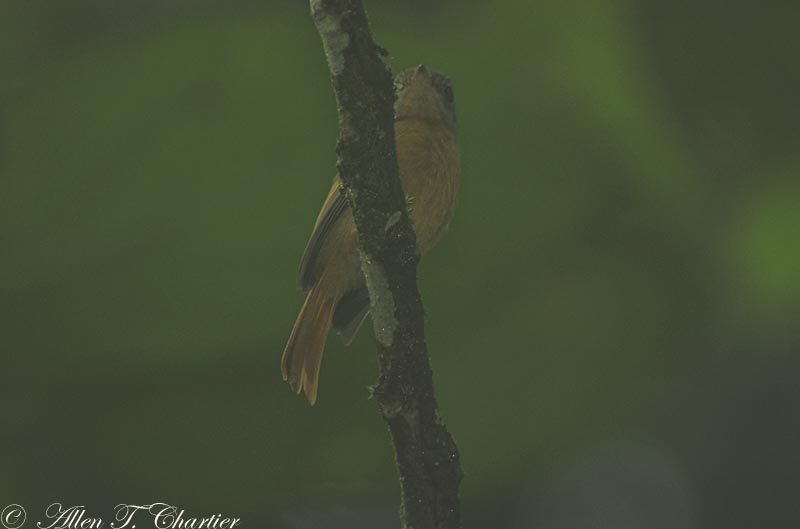

We had been seeing Mantled Howler Monkeys daily, at many locations, but this female with a youngster cooperated nicely for us.

And the baby was at the stage where he was just beginning to explore on his own.
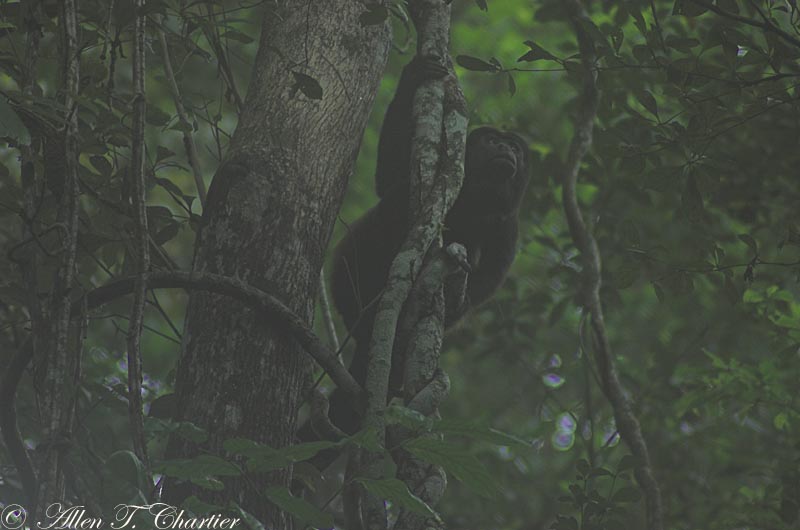
The largest Army Ant swarm of the trip was, like the others, moving the colony to a new location and not hunting, so we did not see the less common species of antbird that follow them.
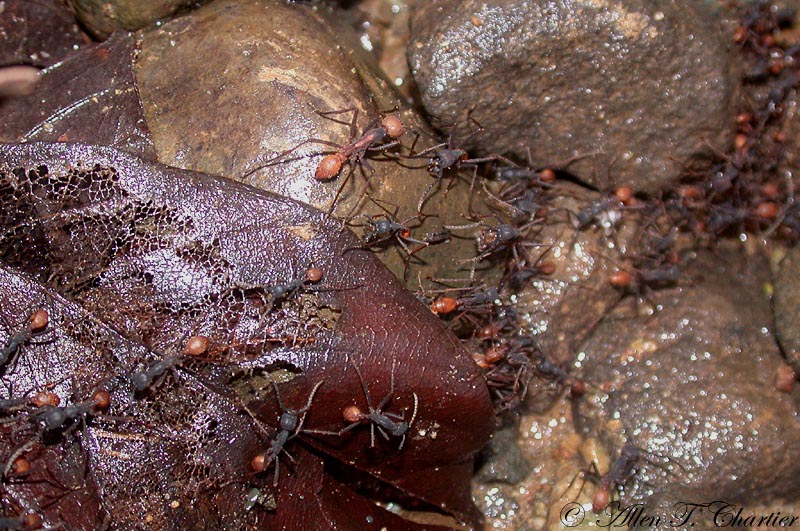
I also took another video of this ant swarm.
Click here to view the Army Ant video.
Jose also pointed out a line of what he called Fire Ants. They weren't red like the Fire Ants in the southern U.S., so I don't really know what they were. But, we kept our distance! They moved quite quickly and never strayed from their well-worn path. Just a warning before you view the video below, it may make you dizzy!
Click here to view the Fire Ant video.At one point, the sun came out for a little while, and some of us notice some small lizards scurrying through the leaf litter on the side of the road. They were Four-lined Amievas (Amieva quadrilineata). Sometimes these lizards are called whiptails in the tropics, but that name is better reserved for the true whiptails in the genus Cnemidophorus.
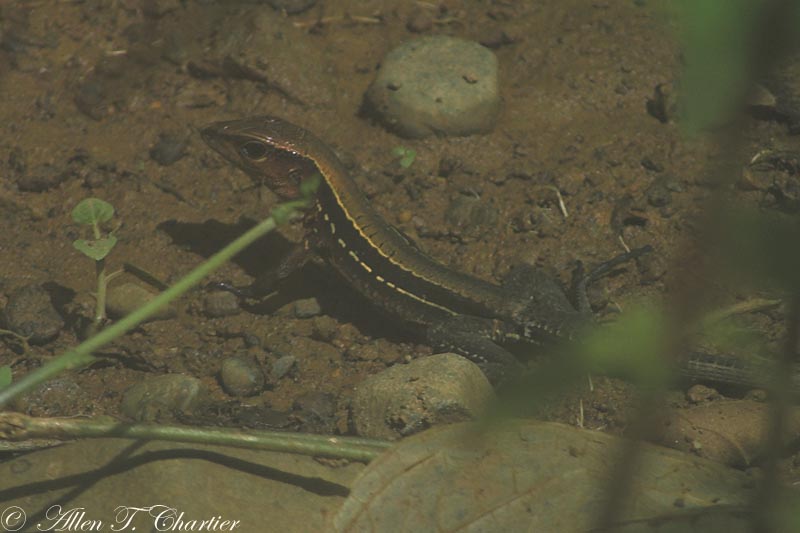
The sun also brought out butterflies and other insects. Two species of Heliconia were nectaring at the Hot Lips plants, including this black and white Heliconius cydno.
![]()
And this more colorful Heliconius doris, a common tropical species of Heliconia. This one probably had a close encounter or two with a flycatcher judging by the bite marks in its wings.
![]()
We had another, better look at the large Helicopter Damselfly (Mecistogaster linearis).
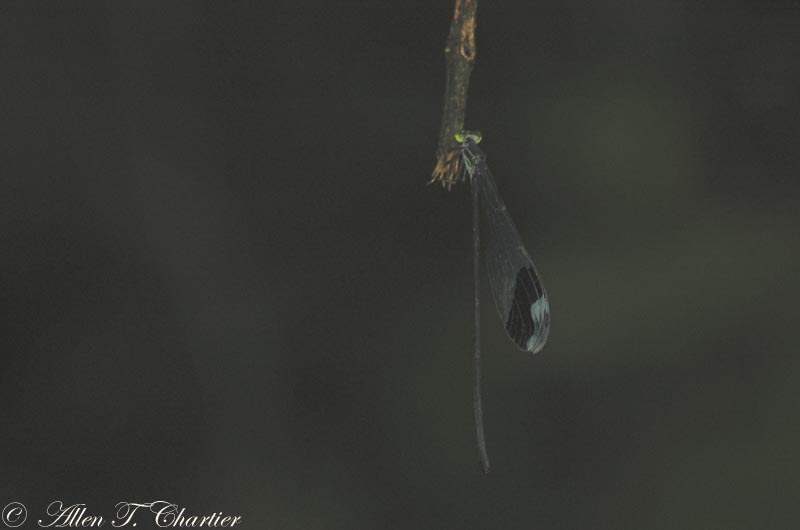
And this small, bright beetle in the Leaf Beetle family (Chrysomelidae: Omophoita cyanipennis), caught my eye with its pink thorax. I don't think I've ever seen a beetle with pink on it before. One common name I found on the internet for this species is Eight-spotted Flea Beetle.

An odd insect, very much like a leafhopper but two-inches long, caught our attention as it flew across in front of us and landed on a tree. I have no idea what this strange insect is, other than it is probably in the family Homoptera. The odd, cottony material protruding from the abdomen is apparently part of the insect (camouflage?).

But the strangest of all was spotted by Diana in the top of a plant about 10-feet tall (ginger?). It is a spider that is apparently mimicking the buds or flowers of this plant, and apparently ambushing any prey that might come by. We have similar spiders in Michigan, but not nearly as large as this one!


At the bridge 5 kilometers from the entrance, we turned around and started heading back. An apparently recent development along the Pipeline Road is that the Smithsonian Tropical Research Institute has requested that tour groups (and individual birders?) not enter past this bridge. The reason is that they are using the forest here as a training ground for captive bred Harpy Eagles before they are released into the wild. This is great for the eagles, as they certainly do need the help, but unfortunate for birders since some of the best forest along this road is past the 5 kilometer point.
We headed back to the 2 kilometer bridge and before we got there it started to rain, so our driver picked us up and drove us the rest of the way. Cheri picked up her hummingbird feeder, which appeared to be untouched. At the Canopy Tower, the hummingbirds were emptying it every couple of hours. We ate lunch here and soon it started to rain again. We decided to move to the newly opened visitors center just up a short side road near this bridge. The building was nice, and they had all the signage up and ready for the official opening, which was to be soon.
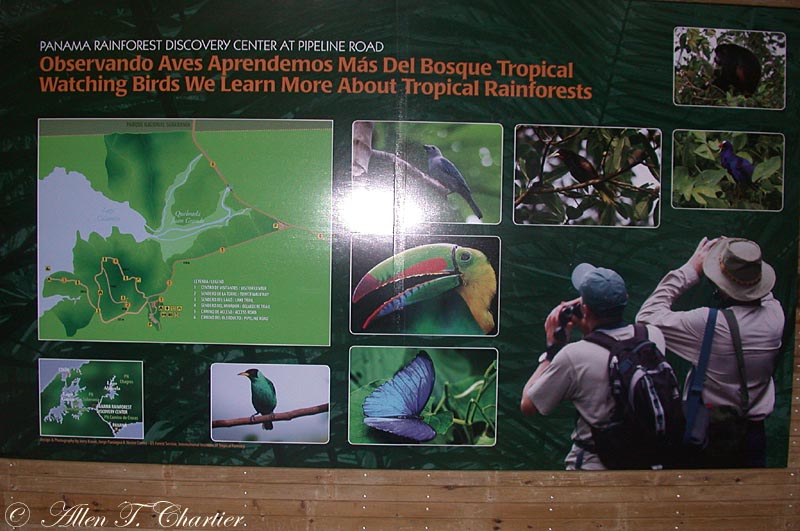
They also had ten hummingbird feeders strung out over a small garden, and as the rain picked up again we watched the hummers feeding and bathing from the convenience of an overhang of the building. Once the rain let up some, Jeff had a great time working these feeders, as there were at least 50 hummingbirds using them. Notice the shadow of a hummingbird on his forehead! It was now obvious why Cheri's feeder had not been used as it was hung only a couple hundred yards away from this more appealing setup.
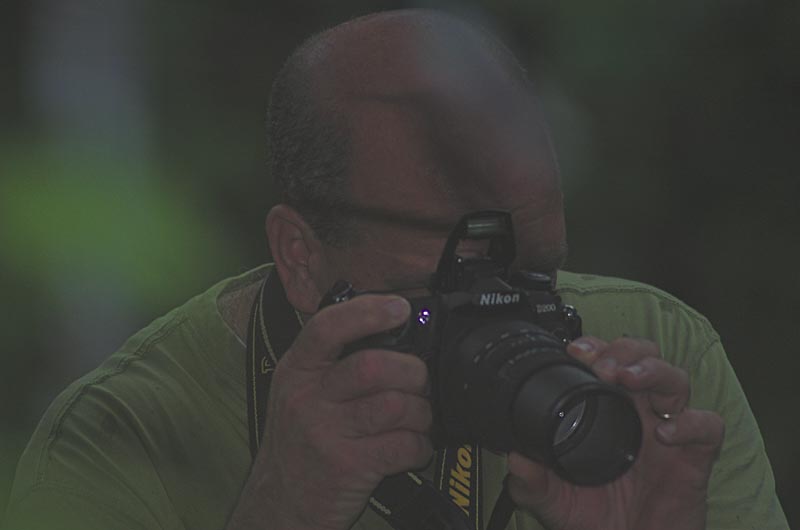
I had a great time too, and got the only decent hummingbird flight shot of the trip (it was constantly cloudy), this nice male Blue-chested Hummingbird.

We worked our way back out to the main road, and stopped again briefly at one of the Ammo Dump Ponds near Gamboa. With the slightly better light, I was finally able to get a decent photo of a Lesser Kiskadee.
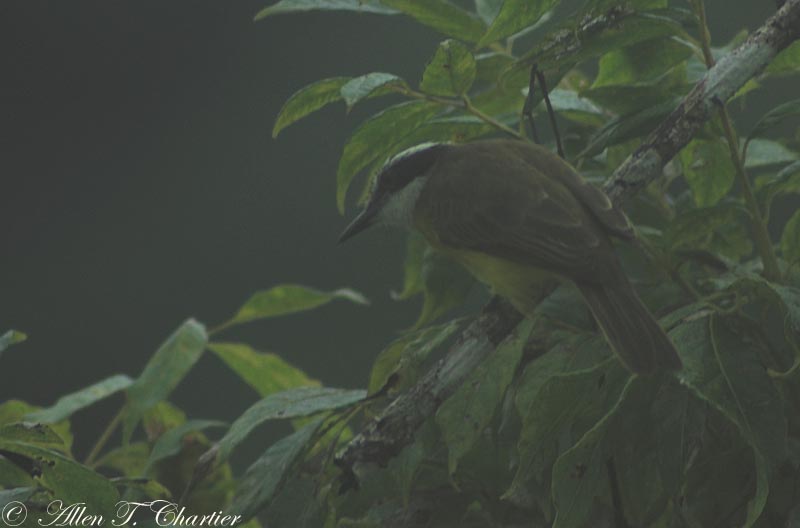
The Lesser Kiskadee is one of several medium to large sized flycatchers with black and white on the head and yellow underparts that we saw frequently, and had to keep sorting out their names as well as their ID points. We finally came up with a name for the lot of them, should any taxonomist be willing to consider lumping them all! We started calling them Marginally Social Lesser Boat-billed Kiskadees!
Returing to the Canopy Tower in mid-afternoon allowed us to work the hummingbird feeders there a bit more. Up to this point, the female White-necked Jacobins had not been much in evidence. Perhaps they were nesting. But, this female posed nicely for me.
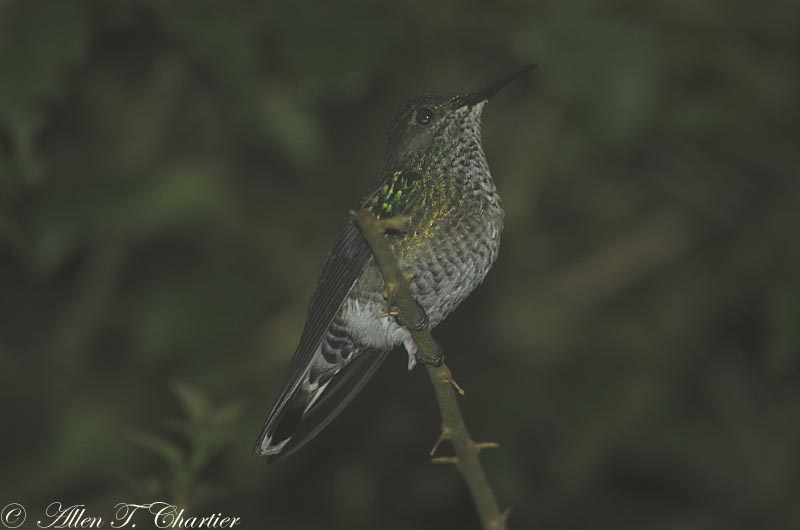
Not to be outdone, this male White-necked Jacobin also cooperated nicely. Believe it or not, these are both full-frame images; no cropping.

This nice male Blue-chested Hummingbird cooperated as well, the afternoon light adding a few more colors to his usual compliment of green, bronze, and blue.

They had a nice turkey dinner for us back at the Canopy Tower. 118 species today, 227 for the trip.
![]()